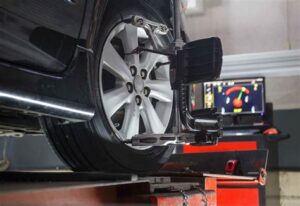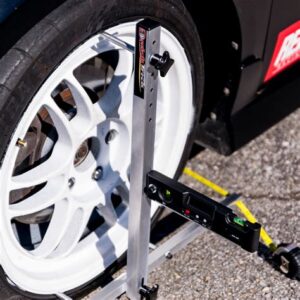Learn about the car alignment process, factors influencing alignment time, how to expedite it, and the importance of selecting a qualified mechanic.When it comes to maintaining your vehicle’s performance, understanding the car alignment process is essential. Many drivers overlook this crucial aspect, often wondering how long a car alignment actually takes. While getting an alignment is vital for optimal handling and tire longevity, the time it requires can vary based on several factors. In this blog post, we’ll break down the car alignment process, discuss the average time you can expect for this service, and explore the various elements that can affect that timeline. Additionally, we’ll offer tips on how to expedite the alignment process and emphasize the importance of selecting a qualified mechanic to ensure everything is done correctly. By the end of this post, you’ll have a clearer understanding of car alignments and how to make the most of your service appointment.
Understanding the Car Alignment Process
Car alignment is a crucial aspect of vehicle maintenance that ensures your vehicle’s wheels are perpendicular to the road and parallel to each other. This process is often overlooked, but it plays a vital role in the safety and performance of your vehicle. Proper alignment helps in tire longevity, improved handling, and better fuel efficiency.
There are several stages involved in the car alignment process, including the assessment of the vehicle’s suspension geometry, adjustments to the angles of the wheels, and a detailed examination of the tires. The primary angles adjusted during the alignment process include camber, caster, and toe. Each of these elements is essential for maintaining the vehicle’s stability and ensuring even tire wear.
The car alignment process typically involves the use of specialized equipment that measures the angles of each wheel. Mechanics will adjust these angles based on the manufacturer’s specifications. It’s important to note that a qualified mechanic should perform this task to ensure the job is done accurately, guaranteeing the best performance from your vehicle.
Factors Affecting Alignment Time
When it comes to getting your vehicle’s alignment checked, several factors can influence how long the process will take. Understanding these factors can help you plan your visit to the mechanic and ensure that your car’s wheels are aligned correctly.
1. Type of Vehicle: The make and model of your vehicle play a significant role in alignment time. Some vehicles, particularly those with complex suspension systems, may require more detailed adjustments that take longer to complete.
2. Current Condition of the Vehicle: If your car shows signs of wear and tear, like damaged suspension components or uneven tire wear, the mechanic may need to perform additional repairs or replacements before the alignment can be done. This can extend the overall time required for the service.
3. Alignment Method Used: There are different methods for performing a wheel alignment, such as 2-wheel and 4-wheel alignments. A 4-wheel alignment is more comprehensive and often takes longer than a 2-wheel alignment. The method chosen will depend on the car’s drivetrain and the mechanic’s evaluation.
4. Shop’s Workload and Efficiency: The volume of work at the auto repair shop at the time of your visit can also impact how long the alignment takes. A busy shop may lead to longer wait times, whereas an efficient shop may be able to complete the task faster.
5. Technology and Equipment Used: Shops equipped with modern alignment technology and tools can often perform alignments more quickly and accurately than those using older equipment. Investing in quality tools can save time and improve the alignment results.
By understanding these factors, you can better anticipate the time you should expect to spend at the auto repair shop during your next car alignment service.
Average Time for Car Alignment
When it comes to car maintenance, one question that often arises is how long does a car alignment take? On average, the process of aligning a vehicle’s wheels typically takes between 30 minutes to 1 hour. However, this duration can vary based on several factors.
Many vehicle repair shops can perform car alignments quickly, but the exact time depends on the shop’s equipment and the complexity of your vehicle’s alignment needs. For example, a standard two-wheel alignment may take less time than a four-wheel alignment, which involves a more detailed process. Moreover, the model of the car and its suspension system type will significantly impact the time required for the alignment.
To give you a better idea of how long a car alignment might take, here’s a simple comparison of the average times based on vehicle types:
| Vehicle Type | Average Alignment Time |
|---|---|
| Compact Car | 30 minutes |
| SUV | 45 minutes |
| Pickup Truck | 1 hour |
In summary, while most car alignments can be done in under an hour, factors such as vehicle type, shop efficiency, and any additional repairs needed will ultimately determine the time for car alignment. Always check with your mechanic for a more personalized estimate.
How to Expedite Alignment Process
When it comes to getting your car aligned, you may want the process to be as swift as possible. Fortunately, there are several strategies you can employ to expedite the alignment process. Here are some effective approaches to consider:
- Schedule Appointments in Advance: Always call ahead and book an appointment. This ensures that the mechanics allocate specific time for your vehicle, reducing unforeseen delays.
- Arrive Prepared: Bring your vehicle in a clean state and ensure there’s no clutter inside. This simplifies the mechanic’s job and minimizes any unnecessary delays.
- Regular Maintenance: Regularly checking the suspension and tires can help identify any issues that may slow down the alignment process. Keeping these components in good condition leads to a quicker alignment.
Additionally, it’s important to have all the necessary documentation ready, like past maintenance records. This can provide the mechanic with insight into any recurring issues that might require attention.
Lastly, always choose a shop that has a reputation for efficiency and quality service. Qualified mechanics can often pinpoint alignment issues faster and perform the necessary adjustments more effectively.
By implementing these strategies, you can significantly speed up the alignment process and ensure your car is back on the road without unnecessary delays.
Importance of Choosing a Qualified Mechanic
Choosing a qualified mechanic for your vehicle’s alignment process is crucial to ensure the longevity and performance of your car. An experienced mechanic not only has the technical know-how but also understands the intricacies that come with different vehicle makes and models. They can identify issues that may not be immediately evident to the untrained eye.
A qualified mechanic utilizes advanced tools and equipment to perform alignments accurately. This precision is essential; even minor adjustments can significantly affect your car’s handling and tire wear. When you rely on a skilled professional, you reduce the risk of improper alignments, which can lead to further mechanical problems and additional costs down the road.
Moreover, a good mechanic will provide you with honest assessments and recommendations regarding your vehicle. They are likely to offer insights into any other maintenance needs your car might have, ensuring that you receive comprehensive care. Therefore, investing your time in finding a reputable mechanic can lead to enhanced performance and safety for your vehicle.
Frequently Asked Questions
What factors influence the duration of a car alignment?
The duration of a car alignment can be influenced by factors such as the type of alignment needed (front-end or four-wheel), the condition of the vehicle’s suspension components, and the complexity of the alignment system.
How long does a standard wheel alignment typically take?
A standard wheel alignment usually takes about 30 minutes to 1 hour, depending on the shop’s workload and the specific adjustments needed.
Can a car alignment be completed without an appointment?
While some auto shops may accept walk-ins for alignment services, it’s generally recommended to schedule an appointment to ensure timely service.
What signs indicate that a car needs an alignment?
Signs that a car may need an alignment include uneven tire wear, the steering wheel being off-center when driving straight, or the vehicle pulling to one side.
Is it necessary to get an alignment after buying new tires?
Yes, it is often recommended to get an alignment after installing new tires to ensure proper wear and extend the lifespan of the tires.
How often should I have my car aligned?
It’s generally recommended to have your car aligned every 6,000 to 10,000 miles, or annually, but it’s best to consult your vehicle’s owner manual for specific recommendations.
What are the consequences of not getting a car alignment?
Not getting a car alignment can lead to uneven tire wear, decreased fuel efficiency, and potential handling issues, which could result in safety hazards while driving.





